Watermelon growing for beginners might seem daunting, but trust me, with a few simple tricks and a little DIY spirit, you can be harvesting your own juicy watermelons before you know it! Imagine biting into a perfectly ripe, homegrown watermelon on a hot summer day – the sweet, refreshing taste is unlike anything you can buy in a store. That’s the magic we’re unlocking today!
Watermelons have a rich history, dating back thousands of years to Africa, where they originated. They were even found in ancient Egyptian tombs, showing just how valued this fruit has been throughout history. Over time, different varieties have been cultivated around the world, each with its own unique flavor and characteristics.
But why should you bother with watermelon growing for beginners? Well, for starters, store-bought watermelons can be expensive and sometimes lack that intense flavor we crave. Plus, growing your own allows you to control what goes into your food, ensuring it’s free from harmful pesticides and chemicals. More importantly, it’s incredibly rewarding to nurture a plant from seed to fruit, and share the bounty with friends and family. This article will guide you through easy DIY hacks and tricks that will make watermelon growing a breeze, even if you’ve never gardened before. Let’s get started!
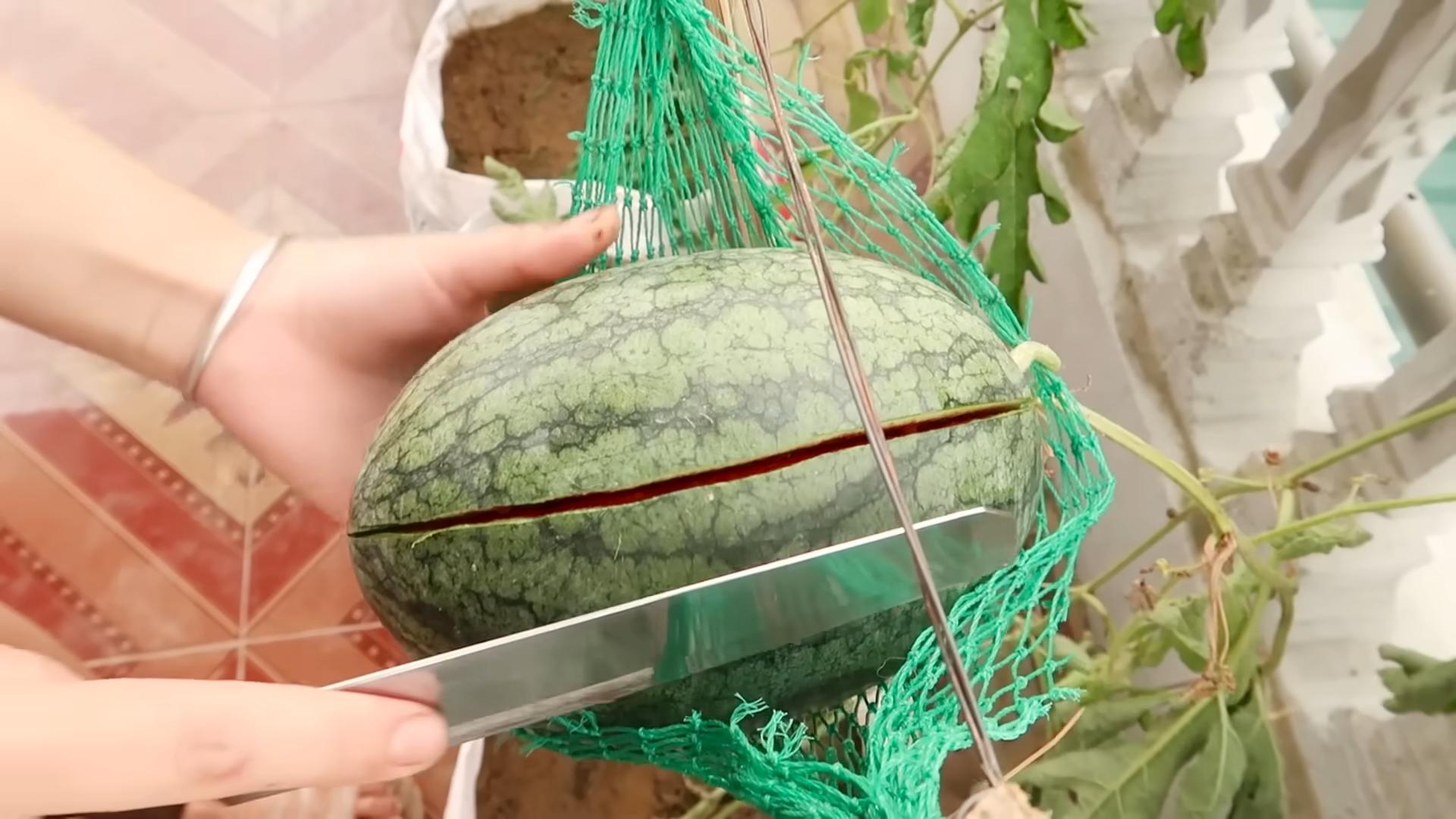
Growing Watermelons: A Beginner’s Guide to Sweet Success!
Hey there, fellow gardening enthusiasts! Ever dreamt of biting into a juicy, homegrown watermelon on a hot summer day? Well, dream no more! Growing watermelons might seem intimidating, but trust me, with a little know-how and patience, you can absolutely do it. I’m going to walk you through everything you need to know, from choosing the right variety to harvesting your prize-winning melon. Let’s get started!
Choosing the Right Watermelon Variety
First things first, you need to pick a watermelon variety that suits your climate and garden size. Not all watermelons are created equal! Here’s a breakdown to help you decide:
* Climate Considerations:
* Short Growing Seasons: If you live in a region with a short growing season (less than 80 days), opt for faster-maturing varieties like ‘Sugar Baby,’ “Bush Sugar Baby” or ‘Golden Midget.’ These are smaller and ripen quicker.
* Long Growing Seasons: If you have a longer growing season, you have more options! Consider larger varieties like ‘Charleston Gray,’ ‘Crimson Sweet,’ or ‘Jubilee.’
* Space Considerations:
* Limited Space: If you’re short on space, bush varieties like ‘Bush Sugar Baby’ or ‘Garden Baby’ are your best bet. They take up significantly less room than traditional vining types. You can even grow them in large containers!
* Ample Space: If you have plenty of room, go wild with the larger vining varieties. Just remember they need a lot of space to sprawl.
* Personal Preference:
* Seedless Watermelons: If you dislike seeds, choose a seedless variety like ‘Triploid’ or ‘Millionaire.’ Keep in mind that seedless watermelons require a pollinator variety nearby to produce fruit.
* Colored Flesh: Want something different? Try a yellow or orange-fleshed watermelon like ‘Yellow Doll’ or ‘OrangeGlo.’
Preparing Your Garden for Watermelon Glory
Watermelons are sun-loving, nutrient-hungry plants. Proper soil preparation is crucial for a bountiful harvest.
* Sunlight: Watermelons need at least 6-8 hours of direct sunlight per day. Choose a location in your garden that gets plenty of sunshine.
* Soil: Watermelons thrive in well-drained, sandy loam soil. The soil should be rich in organic matter.
* Soil pH: Aim for a soil pH between 6.0 and 6.8. You can test your soil pH with a home testing kit or send a sample to your local agricultural extension office.
* Amendments: Before planting, amend your soil with plenty of compost or well-rotted manure. This will improve drainage, add nutrients, and help retain moisture. You can also add a slow-release fertilizer formulated for vegetables.
Starting Your Watermelon Seeds (Indoors or Outdoors)
You have two options for starting your watermelon seeds: indoors or directly in the garden. Starting indoors gives you a head start, especially in cooler climates.
Starting Seeds Indoors (Recommended for Short Growing Seasons)
1. Timing: Start your seeds indoors about 4-6 weeks before the last expected frost.
2. Containers: Use peat pots or biodegradable pots. Watermelons don’t like to have their roots disturbed, so these pots can be planted directly into the ground, minimizing transplant shock.
3. Soil: Fill the pots with a seed-starting mix.
4. Planting: Plant 2-3 seeds per pot, about 1 inch deep.
5. Watering: Water gently to moisten the soil. Don’t overwater!
6. Warmth: Keep the pots in a warm location (around 80-85°F) until the seeds germinate. You can use a heat mat to provide bottom heat.
7. Light: Once the seeds germinate, move the pots to a sunny window or under grow lights.
8. Thinning: Once the seedlings have a few true leaves, thin them to one strong seedling per pot.
9. Hardening Off: About a week before transplanting, gradually acclimate the seedlings to outdoor conditions. This process is called “hardening off.” Start by placing the seedlings outdoors in a sheltered location for a few hours each day, gradually increasing the amount of time they spend outside.
Direct Sowing (Suitable for Long Growing Seasons)
1. Timing: Sow seeds directly into the garden after the last expected frost, when the soil temperature has warmed to at least 70°F.
2. Planting: Plant seeds about 1 inch deep, spacing them according to the variety’s recommendations (usually 2-3 feet apart for bush varieties and 3-5 feet apart for vining varieties).
3. Watering: Water gently to moisten the soil.
4. Thinning: Once the seedlings emerge, thin them to one strong seedling per hill.
Transplanting Your Watermelon Seedlings
Whether you started your seeds indoors or purchased seedlings from a nursery, transplanting them into the garden requires care.
1. Timing: Transplant seedlings after the last expected frost, when the soil has warmed to at least 70°F.
2. Preparation: Dig a hole that is slightly larger than the root ball of the seedling.
3. Planting: Gently remove the seedling from its pot (if using peat pots, you can plant the entire pot). Place the seedling in the hole, making sure the top of the root ball is level with the surrounding soil.
4. Watering: Water thoroughly after planting.
5. Mulching: Apply a layer of mulch around the plants to help retain moisture, suppress weeds, and regulate soil temperature. Straw, hay, or wood chips are good choices.
Caring for Your Watermelon Plants
Once your watermelon plants are in the ground, they need regular care to thrive.
* Watering: Watermelons need consistent moisture, especially during fruit development. Water deeply and regularly, aiming for about 1-2 inches of water per week. Avoid overhead watering, which can promote fungal diseases. Drip irrigation is ideal.
* Fertilizing: Watermelons are heavy feeders. Fertilize them every 2-3 weeks with a balanced fertilizer or a fertilizer specifically formulated for vegetables. You can also side-dress with compost or well-rotted manure.
* Weeding: Keep the area around your watermelon plants free of weeds. Weeds compete with watermelons for nutrients and water.
* Pruning (Optional): Some gardeners prune their watermelon vines to encourage larger fruit. To prune, remove any side shoots that develop along the main vine. This will direct the plant’s energy towards fruit production. I personally don’t prune unless the vines are taking over the entire garden.
* Pollination: Watermelons require pollination to produce fruit. Bees are the primary pollinators. If you’re not seeing many bees in your garden, you can hand-pollinate the flowers. To hand-pollinate, use a small paintbrush to transfer pollen from the male flowers (which have a long, thin stem) to the female flowers (which have a small, immature watermelon at the base).
Dealing with Pests and Diseases
Watermelons can be susceptible to various pests and diseases. Here are some common problems and how to address them:
* Cucumber Beetles: These beetles can damage young plants and transmit diseases. Control them with insecticidal soap or neem oil.
* Aphids: These small, sap-sucking insects can weaken plants. Control them with insecticidal soap or a strong stream of water.
* Squash Vine Borers: These pests can bore into the stems of watermelon plants, causing them to wilt and die. Prevent them by wrapping the base of the stems with aluminum foil or netting.
* Powdery Mildew: This fungal disease causes a white, powdery coating on the leaves. Prevent it by providing good air circulation and avoiding overhead watering. Treat it with a fungicide if necessary.
* Anthracnose: This fungal disease causes dark, sunken spots on the leaves and fruit. Prevent it by providing good air circulation and avoiding overhead watering. Treat it with a fungicide if necessary.
Harvesting Your Watermelons: The Sweet Reward!
Knowing when to harvest your watermelons is crucial for getting that perfect, juicy flavor. Here are some telltale signs:
1. Days to Maturity: Check the seed packet or plant tag for the variety’s days to maturity. This is a good starting point, but it’s not always accurate.
2. Tendril: The tendril closest to the fruit should be brown and dry.
3. Ground Spot: The spot where the watermelon rests on the ground (the ground spot) should be yellow
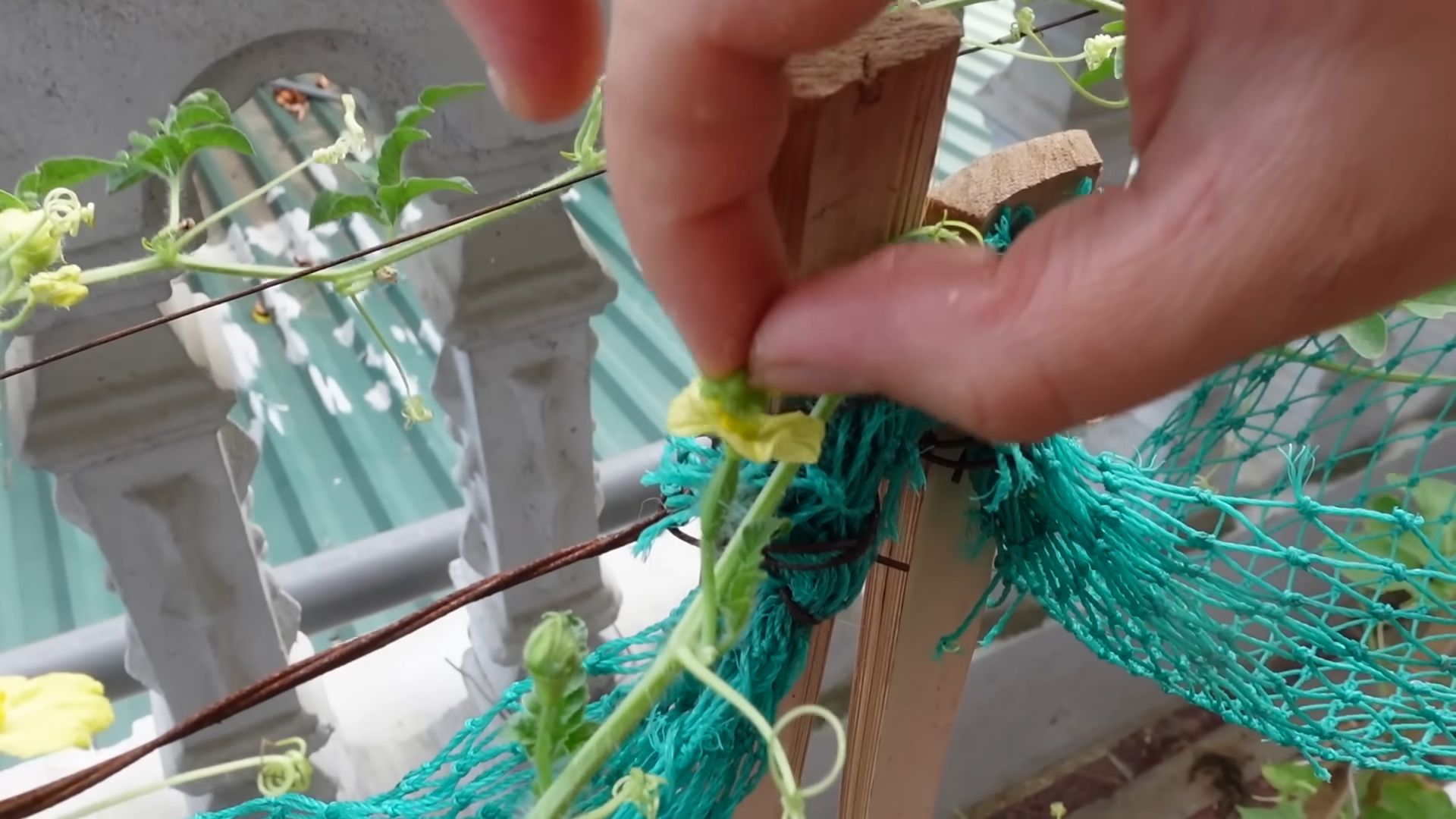
Conclusion
So, there you have it! Growing your own watermelons isn’t just a fun summer project; it’s a rewarding experience that brings the sweet taste of success right to your backyard. We’ve walked through the essential steps, from selecting the perfect seeds to nurturing your vines and finally harvesting that juicy, red prize. But why is this DIY watermelon growing adventure a must-try?
Firstly, the flavor difference between a homegrown watermelon and a store-bought one is undeniable. Imagine biting into a watermelon ripened under the warm sun, bursting with natural sweetness and a crisp, refreshing texture. It’s a taste sensation you simply can’t replicate. Secondly, you have complete control over the growing process. You can choose organic methods, avoid harmful pesticides, and ensure your watermelon is as healthy and natural as possible. This is especially important if you’re concerned about what you’re putting into your body and the impact on the environment.
Beyond the taste and health benefits, growing watermelons is an incredibly educational and engaging activity, especially for families. It teaches children about the life cycle of plants, the importance of patience, and the satisfaction of nurturing something from seed to fruit. It’s a hands-on learning experience that they’ll remember for years to come.
Now, let’s talk about variations. While we’ve focused on the traditional large, red watermelon, don’t be afraid to experiment! Consider trying smaller, personal-sized watermelons like Sugar Baby or Yellow Crimson for a unique twist. You can also explore different growing methods, such as vertical gardening for those with limited space, or even container gardening if you live in an apartment or have a small patio. Grafting watermelon plants onto more disease-resistant rootstock is another advanced technique that can significantly improve your success rate, especially in areas with challenging soil conditions.
For those looking to maximize their yield, consider companion planting. Marigolds can help deter pests, while herbs like basil and oregano can attract beneficial insects. Proper pollination is also crucial, so if you’re not seeing enough bees in your garden, consider hand-pollinating your watermelon flowers. It’s a simple process that can make a big difference in fruit set.
Ultimately, the key to successful watermelon growing is observation and adaptation. Pay close attention to your plants, monitor the weather conditions, and adjust your watering and fertilization accordingly. Don’t be afraid to experiment and learn from your mistakes. Every season is a new opportunity to improve your skills and grow even bigger, juicier watermelons.
We wholeheartedly encourage you to embark on this exciting journey of DIY watermelon growing. It’s a rewarding experience that will bring joy, delicious fruit, and a deeper connection to nature. And most importantly, don’t forget to share your experiences! Post pictures of your watermelon plants, share your tips and tricks, and let us know what worked (and what didn’t) in your garden. Together, we can create a community of watermelon enthusiasts and help each other grow the best watermelons possible. So, grab your seeds, get your hands dirty, and get ready to enjoy the sweet taste of homegrown success!
Frequently Asked Questions (FAQ)
Q: What is the best time to start watermelon seeds?
A: The ideal time to start watermelon seeds depends on your climate. Watermelons are warm-weather crops and require a long growing season. In general, you should start seeds indoors about 6-8 weeks before the last expected frost. If you live in a warmer climate with a longer growing season, you can direct sow seeds outdoors once the soil temperature reaches at least 70°F (21°C). Starting seeds indoors gives you a head start and allows you to transplant healthy seedlings once the weather is consistently warm.
Q: How much space do watermelon plants need?
A: Watermelon plants are sprawling vines that require a significant amount of space. As a general rule, allow at least 4-6 feet between plants in rows that are 8-10 feet apart. This spacing allows the vines to spread out and receive adequate sunlight and air circulation. If you’re growing smaller, personal-sized watermelons, you may be able to get away with slightly closer spacing. Consider using trellises or vertical supports to save space if you have a limited garden area.
Q: What kind of soil is best for growing watermelons?
A: Watermelons thrive in well-drained, sandy loam soil that is rich in organic matter. The soil should have a pH between 6.0 and 6.8. Before planting, amend the soil with compost, aged manure, or other organic materials to improve drainage and fertility. Avoid heavy clay soils, as they can retain too much moisture and lead to root rot. If you have clay soil, consider growing watermelons in raised beds or containers with a well-draining potting mix.
Q: How often should I water my watermelon plants?
A: Watermelon plants need consistent moisture, especially during fruit development. Water deeply and regularly, aiming for about 1-2 inches of water per week. Water at the base of the plants to avoid wetting the foliage, which can increase the risk of fungal diseases. During hot, dry weather, you may need to water more frequently. Use a soil moisture meter or simply stick your finger into the soil to check the moisture level. Reduce watering as the fruits begin to ripen to improve their sweetness.
Q: What are some common pests and diseases that affect watermelons?
A: Watermelons are susceptible to various pests and diseases, including aphids, squash bugs, vine borers, powdery mildew, and fusarium wilt. Regularly inspect your plants for signs of infestation or disease. Use organic pest control methods, such as insecticidal soap or neem oil, to control aphids and squash bugs. Protect your plants from vine borers by wrapping the stems with aluminum foil or using row covers. Prevent powdery mildew by ensuring good air circulation and avoiding overhead watering. Choose disease-resistant watermelon varieties to minimize the risk of fusarium wilt.
Q: How do I know when my watermelon is ripe?
A: Determining when a watermelon is ripe can be tricky, but there are several indicators to look for. The tendril closest to the fruit should be brown and dry. The spot where the watermelon rests on the ground (the “ground spot”) should be yellow or creamy in color. The watermelon should also sound hollow when you thump it. With practice, you’ll develop a feel for when your watermelons are perfectly ripe.
Q: Can I grow watermelons in containers?
A: Yes, you can grow watermelons in containers, but you’ll need to choose a large container (at least 20 gallons) and select a compact or bush variety. Use a well-draining potting mix and provide plenty of sunlight (at least 6-8 hours per day). Water regularly and fertilize every 2-3 weeks with a balanced fertilizer. You may also need to provide support for the vines as they grow. Container-grown watermelons may not be as large as those grown in the ground, but they can still be a rewarding experience.
Q: What kind of fertilizer should I use for watermelons?
A: Watermelons benefit from regular fertilization, especially during the early stages of growth and fruit development. Use a balanced fertilizer (e.g., 10-10-10) at planting time, and then switch to a fertilizer with a higher phosphorus and potassium content (e.g., 5-10-10) once the plants begin to flower. Avoid over-fertilizing with nitrogen, as this can promote excessive vine growth at the expense of fruit production. You can also supplement with organic fertilizers, such as compost tea or fish emulsion.
Q: How can I improve pollination of my watermelon plants?
A: Watermelons require pollination to set fruit. If you’re not seeing enough bees in your garden, you may need to hand-pollinate the flowers. To hand-pollinate, use a small paintbrush to transfer pollen from the male flowers (which have a long, thin stem) to the female flowers (which have a small, immature fruit at the base). Do this in the morning, when the pollen is most viable. You can also attract more bees to your garden by planting bee-friendly flowers, such as lavender, sunflowers, and zinnias.

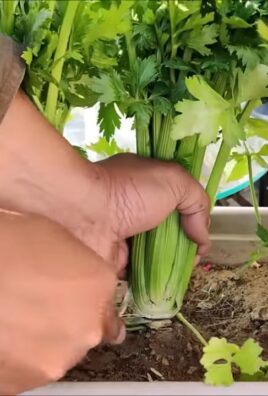
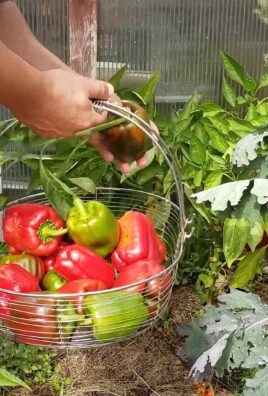
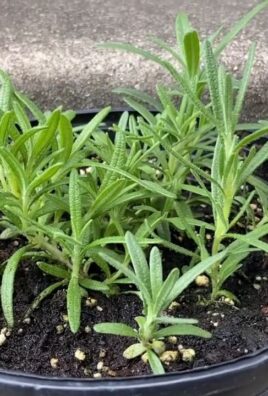
Leave a Comment